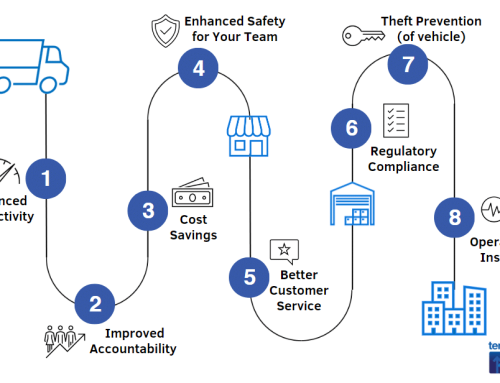A Guide to Systemising your Business
Welcome, small business owner. As a business coach, I’ve worked with business at different stages of growth so I know what it takes to get a business to the next level. This business coach’s guide to systemise your business aims to unlock the power of streamlining your business, a game-changer that can revolutionise the way your company operates. As you navigate through these sections, you’ll discover the key to unlocking growth, efficiency, and scalability within your business.
However, in my experience coaching business owners I’ve observed some common obstacles that impede the process:
Time Constraints: As a small business owner, you wear multiple hats, making time a precious commodity. I want to be clear that systemising requires an initial time investment that might seem challenging.
Resistance to Change: Your team might be comfortable with existing processes, making them resistant to change. I’ve worked with teams who have offered the explanation (or maybe the excuse) of, “But we’ve always done it this way.”
Lack of Clarity: It’s daunting to figure out where to start, what to systemise, and how to implement these changes effectively.
What is Systemising a Business?
First up, let’s get clear on what we’re talking about. Systemising your business involves creating documented processes, procedures, and protocols for every aspect of your operations. It’s about creating a roadmap that everyone in your company can follow consistently.
Three Key Benefits for business systemising:
- Consistency: Ensure that tasks are performed uniformly, reducing errors and increasing reliability.
- Scalability: Streamlining processes allows for easy replication as your business grows.
- Efficiency: Save time and resources by eliminating guesswork and redundant tasks.
Now that you understand the advantages of systemisation, it’s time for me to explain more about how to get started with it. Here are 10 steps to systemising your business:
10 Steps to Systemise Your Business
1. Assess Your Current Processes
Take a close look at your day-to-day operations. Identify tasks that are repeated frequently or areas where mistakes commonly occur. For instance, in a retail setting, handling inventory or managing customer returns might be repetitive tasks prone to errors. Create a checklist or spreadsheet to document these processes, noting pain points and areas for improvement.
2. Document Procedures
Once you’ve pinpointed these processes, start documenting them step-by-step. For example, if it’s the inventory management process, create a document outlining how to receive new inventory, update stock levels, and conduct regular audits. Use screenshots, videos, or flowcharts if necessary to make it more visual and easier to follow.
3. Implement a Centralised Communication Platform
Choose a communication tool that best suits your team’s needs. Create channels or groups for different departments or specific tasks. For instance, set up channels for sales, marketing, and customer support. Encourage your team to use these channels for relevant discussions, sharing updates, and asking questions, keeping all communications organised and easily accessible.
4. Train Your Team
Host training sessions or workshops to introduce the new processes. Provide hands-on guidance and materials like manuals or videos. Consider shadowing sessions where employees can observe and then perform tasks under supervision. Encourage questions and feedback to ensure everyone is comfortable with the new procedures.
5. Automate Repetitive Tasks
Identify tasks that can be automated using software or tools. For instance, if you’re in marketing, automate social media posting using scheduling tools like Hootsuite or Buffer. In accounting, automate invoice generation and payment reminders using accounting software such as QuickBooks or Xero.
6. Regularly Review and Improve
Set a schedule for periodic reviews of your systems. Analyse data and gather feedback from your team to identify areas that need improvement. For instance, if your customer service system shows an increase in complaints about a certain process, review and adjust accordingly.
7. Delegate Responsibility
Empower team members by assigning specific roles related to the newly systemised processes. For instance, designate someone as the point person for inventory management or customer support. Encourage them to take ownership and make suggestions for further improvements.
8. Create a Knowledge Base
Develop a centralised bank of information. This could be an intranet, a shared drive, or a dedicated software. Populate it with guides, FAQs, troubleshooting steps, and best practices. For example, compile a troubleshooting guide for common issues customers face and share it with your support team.
9. Encourage Feedback
Create an open culture where team members feel comfortable sharing ideas and feedback. Implement suggestion boxes, hold regular meetings to discuss improvements, or use online surveys to gather anonymous feedback. For instance, ask your sales team for suggestions on improving the sales process based on their interactions with clients.
10. Celebrate Successes
Acknowledge and reward individuals or teams for successfully implementing new systems. It could be as simple as public recognition during team meetings or more tangible rewards like bonuses or extra time off. Celebrating successes motivates employees and reinforces the importance of systemisation.
Remember, each business is unique, so adapt these steps to suit your specific needs and industry. The key is consistency and gradual implementation. Small steps taken consistently lead to significant improvements over time.
Wrapping it all up
Systemising your business is a journey that might seem daunting initially, but the rewards are immense. Embrace it as an opportunity to move your business forward.
My advice as a business coach is to start small, focus on one area at a time, and involve your team in the process. Remember, this isn’t about changing everything overnight; it’s about making gradual, impactful improvements.
Take action today. I coach my business clients to choose one process to start systemising and commit to it. Your business will thank you for it in increased efficiency, happier employees, and sustainable growth.
Remember, our Tenfold business coaches are here to support you on this journey. Feel free to reach out for guidance or assistance as you embark on this important business project.



